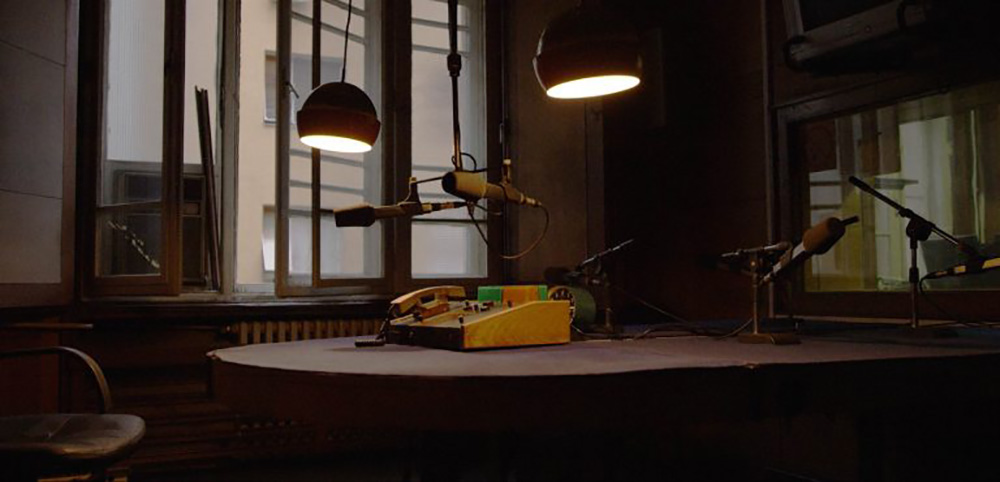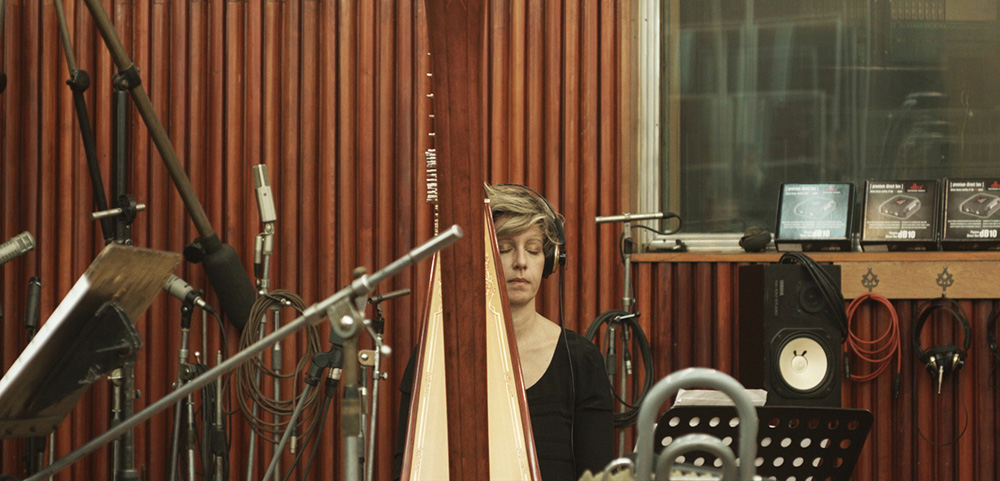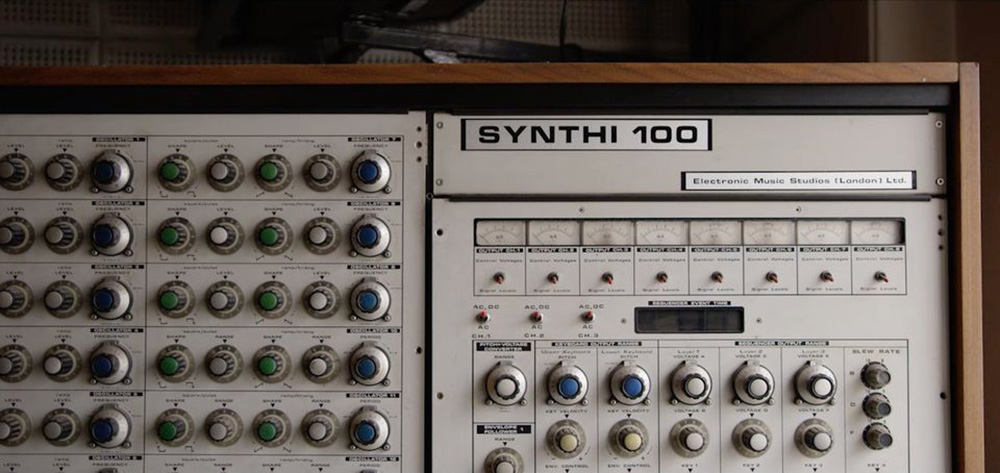Speak So I Can See You

4 September, 2020
This is an audio piece written in response to Marija Stojnić’s Speak So I Can See You. Press play on each LISTEN track in sequence within the text to hear the audio components or read the written transcripts provided as notes.
• • •
Premiering in Australia at the 2020 Melbourne International Film Festival, Serbian filmmaker Marija Stojnić’s experimental documentary Speak So I Can See You (2019) is a captivating aural bricolage that, upon first glance, uncovers the history of one of Europe’s oldest radio stations—Radio Belgrade. However, like the ghostly legend of Russia’s unmanned station MDZhB, the film’s focus is on what is left unsaid, the existential questions this silence produces, and how the answers to such questions can mutate over time.
Paraphrased from a quotation attributed to Socrates, the film’s title suggests that a person’s character is reflected less in their face and more in their speech. This line of thinking is certainly at odds with our pandemic present in which the rise of Zoom, and its many iterations, reveal that speech alone is not enough. On the other hand, as was the case for the Black Lives Matter black-tile trend that swept Instagram in June, a picture (or its formal lack thereof) is said to speak a thousand words. This performance of allyship and its optical art of deception, which was subsequently denounced by another tile that read ‘silence is violence’—is a sentiment that reverberates throughout Stojnić’s film.
In whatever way we bear witness to an event—whether it be in judgement, in calculation, or in reflection—our position as an observer is unsettling. Stojnić’s film is first and foremost one of close observation, with shots lingering on performers and staff in recording studios, offices and archive rooms, capturing moments of concentrated movement. Within the documentary genre, such camera work is often used to imply a sincere depiction of reality. As viewers, we observe the happenings inside Radio Belgrade as if we are not seen, our present-absence fostering a relational intimacy that does not directly influence the action on screen, but feels uncomfortable nonetheless.
LISTEN 1
By privileging sound over image, through both the content of the radio station and the context of its documentation, Stojnić toys with the power of the observational camera position. Littered between the sequences of human activity are slow-motion shots that track empty corridors, stairways and room corners. As if sedated, we are carried by polyphonic sound into the hidden depths of Radio Belgrade.
These soundscapes reference the history of sci-fi and horror, particularly films in which architecture and its technology turn upon its inhabitants, such as Kubrick’s The Shining (1980) and Tarkovsky’s Solaris (1972). In Speak So I Can See You, Stojnić transforms a basement corridor into a frightening chamber of horrors, with clashing voices and warbling static pulling us reluctantly towards a sinister door.
LISTEN 2

MARIJA STOJNIĆ, SPEAK SO I CAN SEE YOU (2019)
FILM STILL
Bombed and occupied by German forces during WWII, Radio Belgrade has served as both witness to, and bastion against, oppressive forces. In 1968, marking the first mass protests since the war, students of Belgrade University fought for social justice and were met with police brutality. ‘If someone were to ask me now if 1968 never existed, I would say no,’ laments the voice of an older man as we watch footage of a present-day protest marching past Radio Belgrade. ‘Years went in this order, 1967 and then came 1969, 1968 never existed. But it did exist…after all.’
The context of this footage, purposefully stripped and universalised, undulates temporally to remind us that history does repeat—that the problems of the past persevere. Stojnić’s careful selection and placement of these soliloquies require that we hold these difficult histories in our throats, just as we search for new ways to describe the world around us. ‘[It is] the 277th Journey Into Words since the long-forgotten Ministry of Education and Science described orthography as nonsense,’ a broadcaster introduces. ‘[The] 17th Journey Into Words since we realised that the government is a completely useless thing.’
LISTEN 3
Stojnić’s prioritisation of sound—a growing technique in documentary practice—serves to change the viewer’s perspective of the observational footage that it is coupled with. This formal approach, championed by the films of Harvard University’s Sensory Ethnography Lab, is intimately tied to philosophies that speculate on the conditions of reality. That is, Speak So I Can See You draws on the theory of object-oriented ontology—a reality in which humans and nonhumans are equal—not only through its form, but also in Stojnić’s curation of archival monologues.
Nonhuman objects speak, as do the bellows of Radio Belgrade, gurgling from a cthuloid nether to deliver us a sage warning. This warning is a call to memory—to not forget the atrocities and civil unrest of the past as we tread hesitantly towards a right rising future.
How we remember this past is crucial, because, as Judith Butler explains, if ‘violence is always interpreted’ then imaginative interpretation could provide possibilities for its amelioration.1
LISTEN 4
In blurring the borders between fiction and documentary by shifting the perspective of Radio Belgrade through sound, Stojnić’s film materialises (if not induces) the type of mania Butler believes will allow a person to imagine the other-worldly possibilities needed to escape our violent present. By structuring a reality of ‘radical equality’, the non-violent force of Butler’s mania propels the narratives of sci-fi films that catastrophise the future. This dynamic entanglement of violent and non-violent forces sets a stage through which humans can directly engage with the future, and develop answers to age-old problems. Played out in Stojnić’s reimagination of Radio Belgrade, this invitation into mania may seem absurd. But there is something to be said of 2020 being referred to by many as a ‘cultural reset’—a ‘reworlding’ of sorts.
LISTEN 5

MARIJA STOJNIĆ, SPEAK SO I CAN SEE YOU (2019)
FILM STILL
Not only present in experimental forms such as Speak So I Can See You, the power shift from image to sound in mainstream media over the last decade suggests that this ‘cultural reset’ may have begun long before 2020, and that the pandemic serves as a magnifying glass. Take the rise and proliferation of podcasting, TV programs like The Masked Singer and TikTok—a social media platform in which success and virality are dependent on the memetic quality of musical lyrics and sound bites. Recently I was welcomed to the spiritual side of TikTok, a place where teens wax lyrical about Nikola Tesla’s 369 manifestation technique, astral projection and meditation practices, which promise to raise your inner vibrational frequency so as to be at one with the world.
LISTEN 6
Like the teens of spiritual TikTok, we have (perhaps unwittingly) begun the manic search for answers in abstract realities. Overwhelmed by the glut of information that technology has afforded us, our clouded understanding of the world and the paranoia of this unknowingness have compelled us to create ‘ever more byzantine theories of the world.’2 As we slowly descend an elevator shaft into the depths of Radio Belgrade, James Bridle’s investigation of this ominous cloud is expressed neatly by the placement of this line: ‘the feeling of a horrendous cloud hangs over books,’ this obscurity growing ‘monstrous heads’ with actual faces that achieve ‘the monstrosity of what we call…fascism.’ If this pandemic is a ‘cultural reset’, Stojnić’s film invites us to imagine a reality that resists this monstrous drone sounding from the cold-war grey zone where we currently sit.
LISTEN 7
Despite our clouded comprehension of the world, Speak So I Can See You makes the importance of aural histories abundantly clear. Sound has the ability to completely transform our perception of a place, our relationship to an object, and our understanding of a memory. It is this transformative quality that gives us the ability to think outside the violent vibrational forces of a rising right. Through Stojnić’s coupling of observational footage and polyphonic sound we are placed in a pole position—antennae resonating with Radio Belgrade, but also with a world newly built by our wildest imaginations. If you were to ask me a year from now if 2020 ever existed, I would say yes and to those of you who would disagree, I would simply ask that you close your eyes and listen for the voices of people who are still yet to be seen.
Audio works sampled:
Andrei Tarkovsky, Solaris, (1972) – English Dub
‘Introduction to Cosmos: A Personal Voyage’ , Episode 1, The Shores of the Cosmic Ocean, aired September 23, 1980
Ben Fordham, 2GB radio interview with Australian Prime Minister Scott Morrison, aired June 11, 2020
Timothy Morton, They are Here, lecture at The Nonhuman Turn Conference delivered May 4, 2012
Jesse Morath, Disconnect (2020), Reset (2020) and Somerset (2020), permission to sample granted by artist.
- Judith Butler, The Force of Non-violence: The Ethical in the Political, (New York and London: Verso, 2020), p.31.
- James Bridle, New Dark Age: Technology and the End of the Future, (New York and London: Verso 2018), p.188.